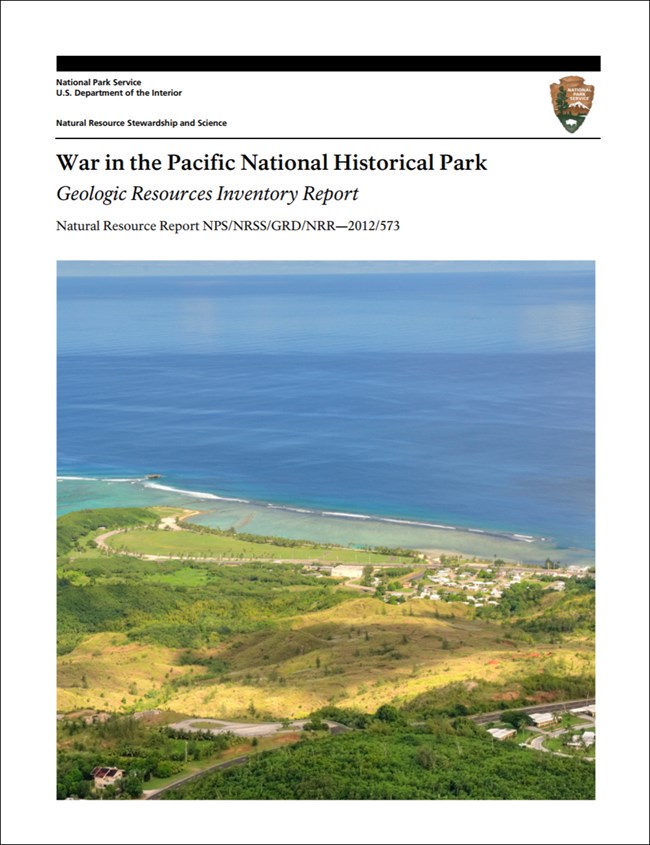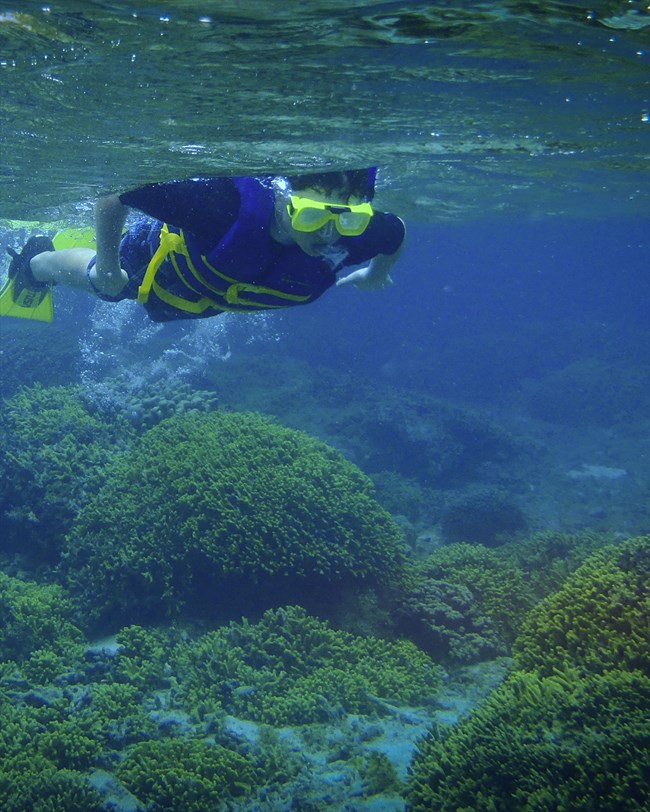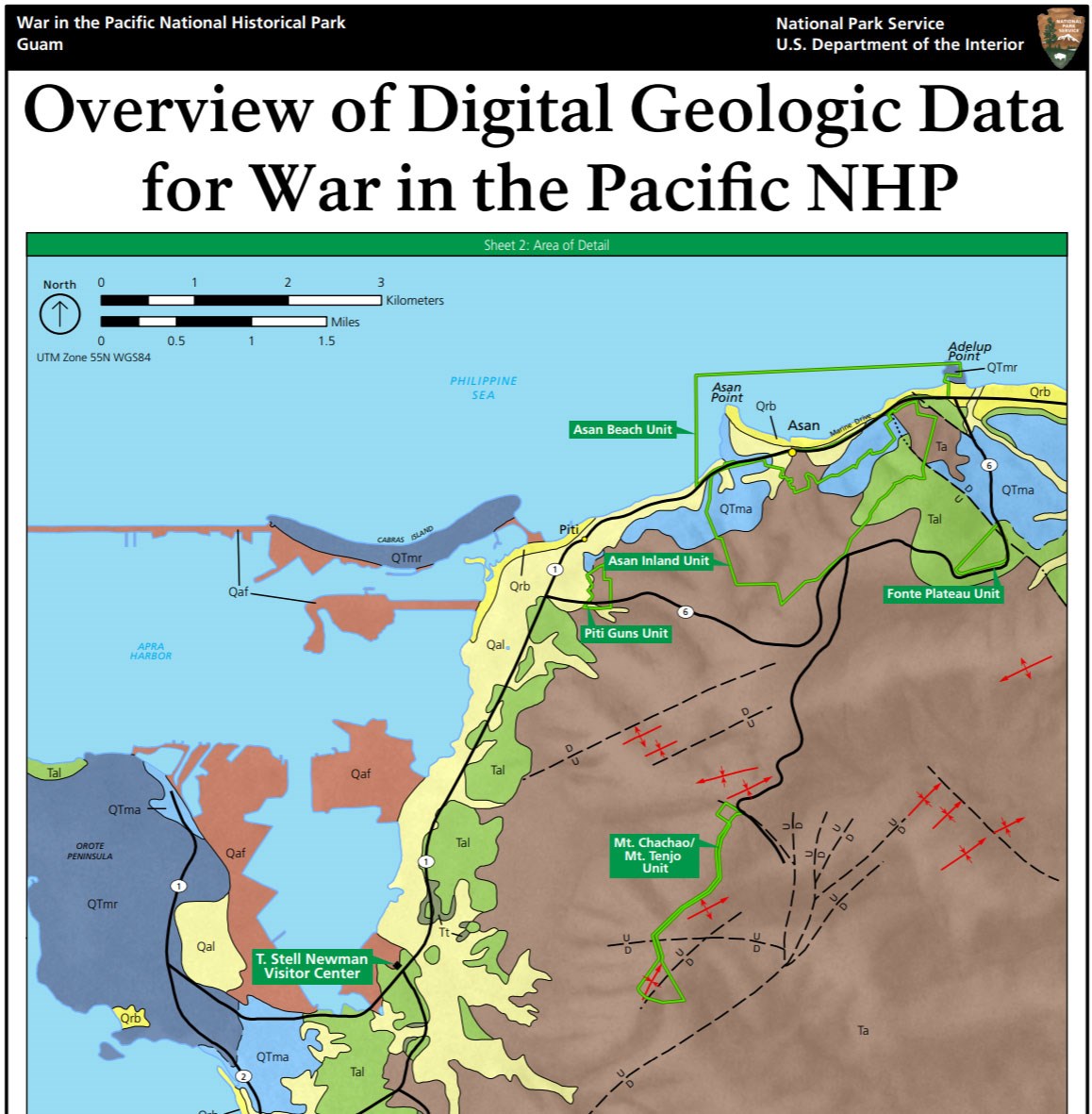Last updated: July 17, 2024
Article
NPS Geodiversity Atlas—War in the Pacific National Historical Park, Guam
Geodiversity refers to the full variety of natural geologic (rocks, minerals, sediments, fossils, landforms, and physical processes) and soil resources and processes that occur in the park. A product of the Geologic Resources Inventory, the NPS Geodiversity Atlas delivers information in support of education, Geoconservation, and integrated management of living (biotic) and non-living (abiotic) components of the ecosystem.

Introduction
War in the Pacific National Historical Park (WAPA) is located on the island of Guam, an unincorporated U.S. territory in the western Pacific. Established on August 18, 1978, WAPA encompasses approximately 822 hectares (2,031 acres) distributed across seven units on the island from the summit of Mount Tenjo to the submerged war relics on the offshore coral reefs (National Park Service 2016). The historical park commemorates the bravery and sacrifice of all those who contributed to the campaigns of the Pacific Theater of World War II. The island of Guam was a strategic position during World War II, and the 1944 liberation of Guam by American forces proved to be a major struggle. Key features of the 1944 battles, such as the invasion landing beaches, pillboxes, caves, foxholes, gun emplacements, and historic structures, are preserved in WAPA as tangible World War II resources that help tell the story of the battle over Guam.
Geologic Setting
The geology of Guam provides the foundation for the dramatic World War II stories that War in the Pacific National Historical Park commemorates. Mapped within the separate park units of WAPA are young, Cenozoic-age volcanic and sedimentary rocks that range from the Eocene–Oligocene to the Holocene. Individual formations within WAPA include (from oldest to youngest) the Eocene–Oligocene Alutom Formation, Miocene Umatac Formation, Miocene–Pliocene Alifan Limestone, Pliocene–Pleistocene Mariana Limestone, and recent beach deposits and alluvium. The volcanic rocks of the Alutom and Umatac Formations record the early history of Guam as part of a still-active island arc. However, the volcanoes near Guam are quiet today and active volcanism is focused on the Northern Mariana Islands (Thornberry-Ehrlich 2012). The accumulation of the younger Alifan and Mariana limestones above the volcanic rocks began before the islands emerged from the sea and are found atop the highest peaks of Guam, indicating a prolonged history of uplift associated with the convergence of the Pacific and Mariana tectonic plates. The limestones of Guam form the substrate for unique ecosystems such as limestone forests and contain classic carbonate karst features such as caves, pinnacles, and blind valleys.
Geology Field Notes
Students and teachers of college-level (or AP) introductory geology or earth science teaching courses will find that each park's Geologic Resource Inventory report includes the Geologic History, Geologic Setting, and Geologic Features & Processes for the park which provides a useful summary of their overall geologic story. See Maps and Reports, below.
- Scoping summaries are records of scoping meetings where NPS staff and local geologists determined the park’s geologic mapping plan and what content should be included in the report.
- Digital geologic maps include files for viewing in GIS software, a guide to using the data, and a document with ancillary map information. Newer products also include data viewable in Google Earth and online map services.
- Reports use the maps to discuss the park’s setting and significance, notable geologic features and processes, geologic resource management issues, and geologic history.
- Posters are a static view of the GIS data in PDF format. Newer posters include aerial imagery or shaded relief and other park information. They are also included with the reports.
- Projects list basic information about the program and all products available for a park.
Source: NPS DataStore Saved Search 3193. To search for additional information, visit the NPS DataStore.
A NPS Soil Resources Inventory project has been completed for War in the Pacific National Historical Park and can be found on the NPS Data Store.
Source: NPS DataStore Saved Search 3218. To search for additional information, visit the NPS DataStore.

Related Links
Related Articles
War In The Pacific National Historical Park
National Park Service Geodiversity Atlas
The servicewide Geodiversity Atlas provides information on geoheritage and geodiversity resources and values within the National Park System. This information supports science-based geoconservation and interpretation in the NPS, as well as STEM education in schools, museums, and field camps. The NPS Geologic Resources Division and many parks work with National and International geoconservation communities to ensure that NPS abiotic resources are managed using the highest standards and best practices available.

